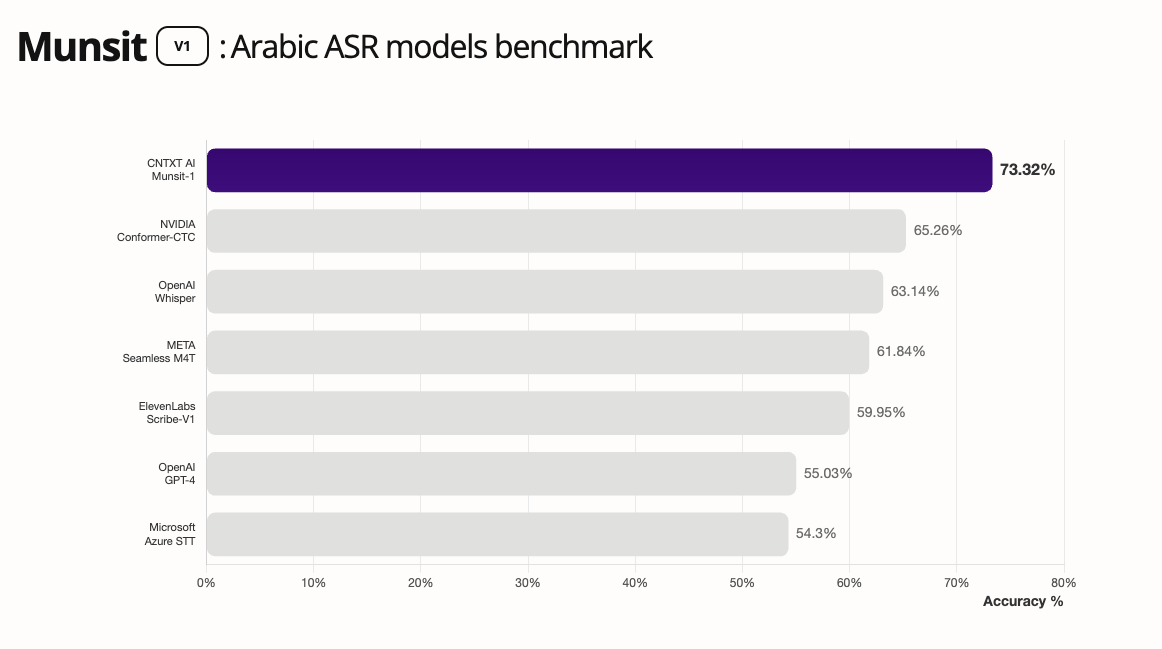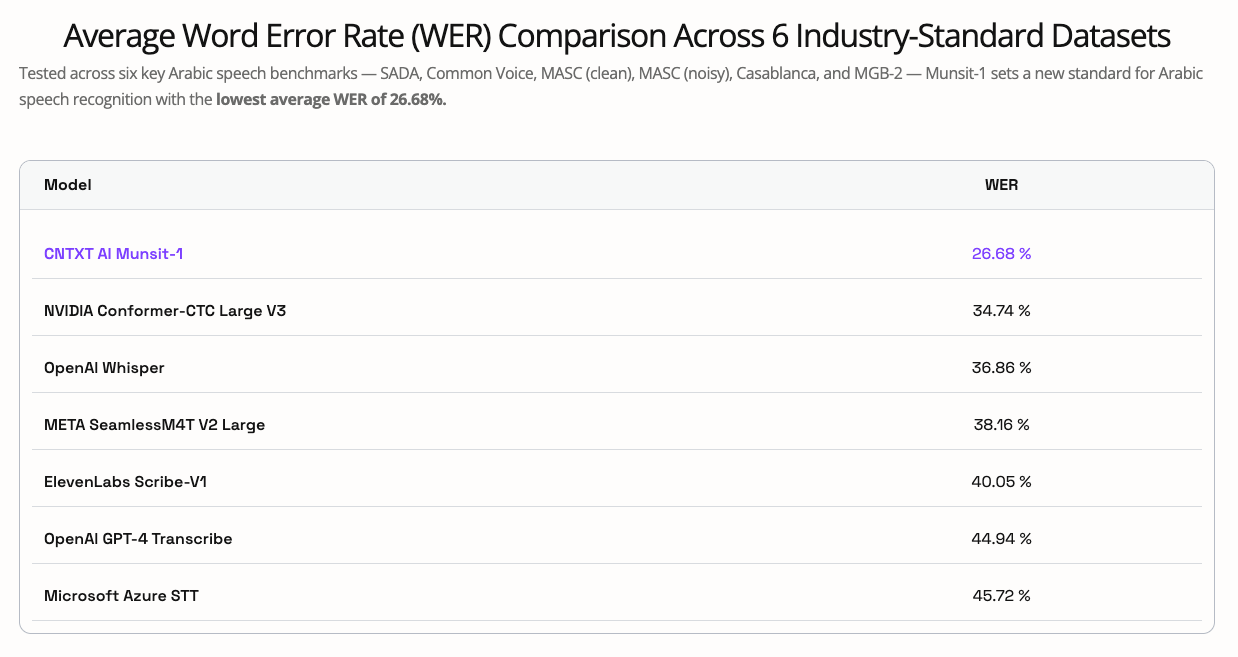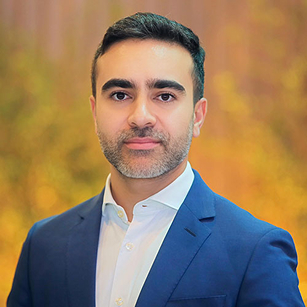Traditional AI systems understand one language above all others: English. While revolutionary in their impact, these models face a linguistic ceiling and nowhere is that limitation more apparent than in Arabic-speaking markets.
Arabic is spoken by over 422 million people across 22 countries, making it the fifth most spoken language globally. Yet despite this massive reach, Arabic represents just 0.5% of web content compared to English's commanding almost 50%, according to Statista. This digital divide translates directly into AI performance gaps that cost businesses opportunities and limit technological inclusion across the Middle East and North Africa.
Recent breakthroughs from regional innovators are rewriting the rules, with Arabic-first models now outperforming global giants like GPT-4o by more than 18 percentage points on Arabic benchmarks. The message is clear: the future of AI in MENA won't be built by adapting English models. It will be powered by Arabic-native intelligence.
The scale of linguistic inequality in AI
The numbers tell a stark story. While Arabic speakers represent over 400 million people worldwide, only 0.5% of natural language processing research focuses on their language.
This research gap creates cascading effects across every AI application, from voice assistants that stumble over dialectical variations to chatbots that miss cultural nuances entirely.
Performance benchmarks reveal the extent of this challenge: When University of Jordan researchers compared AI models on infectious disease queries, English consistently delivered stronger outcomes than Arabic across all metrics. Healthcare applications, where accuracy can be life-or-death, showed particularly concerning gaps in comprehension and relevance.
The disparity extends beyond simple translation. Arabic's linguistic complexity presents unique hurdles that English-first models struggle to navigate. The language operates on a root-based system where words form through pattern insertion, creating dense meanings within compact character sequences. Short vowels are typically omitted in written Arabic, meaning identical letter sequences can carry entirely different meanings depending on context. A nuance that confounds machine interpretation.
Regional dialect diversity amplifies these challenges exponentially. From Gulf Arabic to Maghrebi variations, the language fragments into approximately 30 distinct dialects across five major regional categories: Levantine, Egyptian, Maghrebi, Gulf, and Mesopotamian. Many dialects lack mutual intelligibility, yet most AI systems are trained primarily on Modern Standard Arabic, leaving conversational users underserved.
The business impact of Arabic AI failures
The consequences extend far beyond technical limitations.
- In healthcare settings, AI tools that overlook cultural norms or gender expectations can provide inappropriate guidance, eroding trust and potentially delaying critical care.
- A recent study found that large language models perform significantly worse in Arabic than English on key educational tasks like tutoring and feedback, risking confusion for Arabic-speaking students and reinforcing digital marginalization.
- Financial services face similar constraints. When Arabic-speaking customers interact with AI-powered support systems that cannot process dialectical variations, simple banking queries become frustrating experiences.
- Contact centers serving customers across Saudi Arabia, the UAE, Egypt, and Lebanon must navigate not just language barriers but cultural context that generic models consistently miss.
- Legal analysis tools that misinterpret Arabic contracts or business applications that fail to understand regional terminology create operational inefficiencies that scale with usage.
Day-long processes become minute-long tasks when AI truly understands Arabic but the reverse is equally true when systems fail.
Regional champions emerge from the performance gap
The solution is emerging from within MENA itself. The UAE's Technology Innovation Institute launched Falcon Arabic in 2025, achieving benchmark leadership as the best-performing Arabic AI model in the region. Trained on 600 gigabytes of Arabic tokens spanning Modern Standard Arabic and regional dialects, Falcon Arabic matches the performance of models up to 10 times its size, proving that architectural intelligence can outperform computational brute force.
And then there’s Munsit. Developed by CNTXT AI, Munsit is the region’s first enterprise-grade Arabic speech recognition platform built on 30,000+ hours of annotated audio spanning 25+ dialects.
While global ASR systems buckle under Gulf Arabic accents or code-switching, Munsit has been benchmarked to reduce word error rates by over 30% compared to the best Western alternatives. That means call centers, banks, and government agencies can finally run voice-driven services in Arabic with confidence, from fraud detection to automated KYC verification.


These represent systematic regional investment paying dividends. Artificial intelligence spending in the Middle East, Turkey, and Africa is projected to reach $5 billion in 2025, growing at a 35% compound annual rate toward nearly $12 billion by 2028. Tarjama recently secured $15 million in Series A funding to scale its Arabic.AI platform, while the UAE announced over $200 billion in AI infrastructure investments.
Building Arabic-first infrastructure and talent
Success demands ecosystem transformation. The UAE's Mohamed bin Zayed University of Artificial Intelligence and Saudi Arabia's King Abdullah University of Science and Technology are leading Arabic-specific research that addresses foundational challenges. Their work spans dialectical automatic speech recognition, cultural bias evaluation, and multimodal Arabic processing that combines text, speech, and visual inputs.
Talent development initiatives are equally critical. Arabic AI launched the region's first dedicated Arabic-language AI education hub, offering enterprise upskilling and technical enablement for developers. The program addresses a stark reality: the UAE holds just 0.7% of global AI talent, while Saudi Arabia claims 0.4%, figures dramatically out of proportion with their AI ambitions.
Government backing accelerates these efforts. Saudi Arabia's $40 billion global AI investment fund and the UAE's AI Campus project signal commitment beyond individual initiatives. As McKinsey research indicates, AI could contribute $150 billion to Gulf Cooperation Council countries' GDP, equivalent to 9% of their combined economic output.
The Future is bright.
The Arabic AI revolution embodies a fundamental shift from English-model adaptation to Arabic-native innovation. Waiting for global models to achieve Arabic parity risks competitive disadvantage as regional solutions mature.
The next wave of ME AI development will be characterized by regional collaboration, specialized applications, and cultural intelligence that global models cannot replicate. As investment accelerates and talent develops, Arabic AI is transitioning from a niche requirement to a strategic advantage. One that could reshape how the world's fifth-largest language community engages with artificial intelligence.


